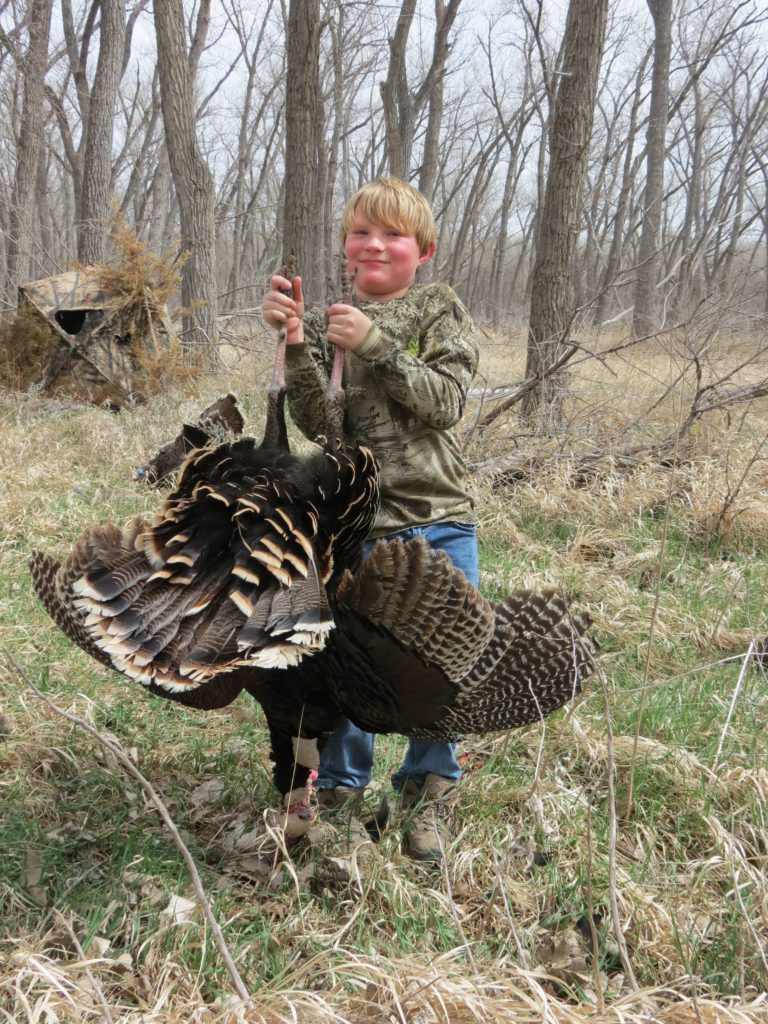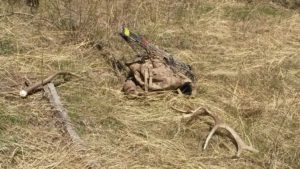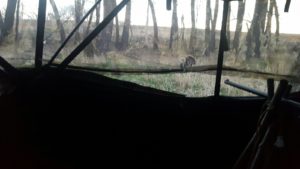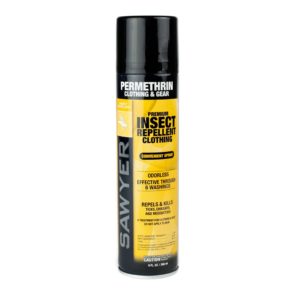We just returned from a successful youth turkey hunt in Nebraska and I thought I’d take a few minutes to share some pointers.

Before I start, I absolutely LOVE that the State of Nebraska has made it so easy to get youngsters (and new hunters) into the field. They do a fantastic job of keeping costs low and access easy; their playbook should be a model for the rest of the nation if we have any hope of getting kids off their I-phones and Xboxes and into the field. It’s really no surprise that a Corn Belt state would take such a practical approach and get it right!

Spring turkey season is a fantastic time of year to be in the woods. The days are warm and the woods are alive with the sounds of spring, I often think I’m in a National Geographic show as I’m sitting in the blind listening to the sounds of nature. Spring temps are also much more enticing to newbies. I’m sure that there are many would-be hunters that have been turned off by freezing temps of the traditional fall seasons. One of our biggest challenges on our turkey hunts is staying focused on turkey hunting! We end up with fishing tackle, bowfishing rigs, Morell mushroom hunting & looking for deer and elk sheds, it’s a cornucopia of outdoor activity.
Guns
One of our biggest problems was finding a gun that the little guys/gals can shoot. We’ve been challenged to find a short enough stock that they can shoulder correctly, light enough they can hold up and one they’re not afraid to fire. Conventional turkey hunting wisdom says you need a 12-gauge with a full or turkey choke with loads that will knock a gobblers head off at 60 yds. I knew that wasn’t in the cards, but still wanted to get the little guys out and get them a shot at a bird. The solution was going with a .410 gauge. I knew the .410 would get the job done but also knew we needed to get the tom in close. I had set a self-imposed 20-yard rule and our shot ended up being 13 yds.
I knew that all the little tricks and tips we’ve developed as bowhunters over the years would work to get that bird into point blank range where the little .410 gauge could get it done. Here are a few considerations for getting those birds into spitting distance.
Blinds – are almost a must for any bowhunter (few have perfected bowhunting turkeys without a blind as that’s the supreme challenge). Those birds have amazing eyesight and can detect the slightest movement, so blinds are perfect for those who haven’t quite mastered the art of when to move. As my boys get a little older I’d like to set them free of the blind because it can be very boring; we make sure to bring lots of books and snacks along. When setting up the blind I do like to brush it in a little, while turkeys don’t seem bothered by the blind I still think it helps. I also try to keep the sun at my back, I’ll often have it setup with my back to the east in the morning and move it to the other side of the field/clearing mid-day so the afternoon sun is again at my back.

The biggest challenge with shooting a gun vs. a bow from the blind is you cannot shoot through the “shoot- thru” mesh, and having an open window definitely ups your odds of getting busted. Try to open only enough windows to cover your decoy spread and nothing more. I mentioned earlier that the weight of the gun was an issue with the little guys, so we used a shooting stick so they could keep their barrels up while the birds worked into range. If possible, try to keep the muzzle from protruding from the blind otherwise chances are you’ll get busted.
Decoys – We’ve owned a TON of decoys over the years but have settled on the DSD’s (Dave Smith Decoys). These guys are not cheap but when I tally up all the costs that go into a hunt the last thing I want are birds hanging up out of range because things don’t look right. We also will use a homemade stuffer decoy that has definitely accounted for the demise of many a tom. I should also mention one of our favorite spots is highly pressured, so much so that I swear that any bird that makes it through a season can identify the make and model of your blind and which manufacturer decoys you’re using. Ok, that may be stretching it a bit, but when we were learning the ropes we had many, many birds hang up out of range which seldom happens anymore.
The last trick we use and probably the most important is getting movement into your setup. On a breezy day using an arrow shaft that is slightly smaller than your ground stake will work but by far our most effective trick is tying a couple strings onto the stakes so we can control the decoy like a puppet. I know it’s not conventional but again we’re talking highly pressured birds and we want them in close. That movement is deadly!
Ticks – Ok, so here’s the one downside of turkey hunting, turkey season is tick season. We do most of

our hunting in Nebraska and I’ve only encountered the larger deer ticks, which are a nuisance but also controllable. I’ve noticed ticks are definitely temperature dependent. You may walk into a spot before first light and not have a tick on you, but you walk out mid-day and can be covered, so just because you’re not seeing them while it’s cool out doesn’t mean they aren’t there. Permethrin spray is the biggest deterrent that I’ve found in keeping ticks at bay. In an area where I may pull 20 off my pant leg after walking, I won’t have a single one after a thorough coating with the Sawyer spray. I follow the direction and try to spray my clothes (including pants, socks and shoes) the day before. It’s also not a bad idea to hit your packs and other cloth type gear that may come in contact with the ground. The stuff works and the diseases that ticks carry are no joke, so take appropriate precautions.
Get out There!
Growing up we hunted everything under the sun, with the exception of turkeys. Probably because Colorado doesn’t have a huge turkey population and nationwide populations weren’t what they are today. Thanks to the efforts of wildlife managers and folk like NWTF (National Wild Turkey Federation) we now have turkey numbers at historic highs. When I first tired turkey hunting about 15 years ago I was immediately hooked and wondered how I’d been missing this all this time! With all that spring has to offer and a season that occurs when there isn’t much else going on, it’s kind of a no-brainer. So dust off your gear and get those little people into the field, I promise you won’t regret it!

Jake Frankhouser
Great shot Beau. Thanks for the article Matt. Well done and great advice. You didn’t mention the TASTE of a wild turkey. When plucked and roasted they are absolutely delicious. They actually taste like a real turkey should. Since they fly the breast meat is slightly dark and as I said DELICIOUS. Thanks for the warning about the Ticks. Lyme disease is terrible and if you don’t catch the bites soon enough the disease is very hard to get rid of.
Heidi
That turkey is almost as big as Beau! Way to go Beau!